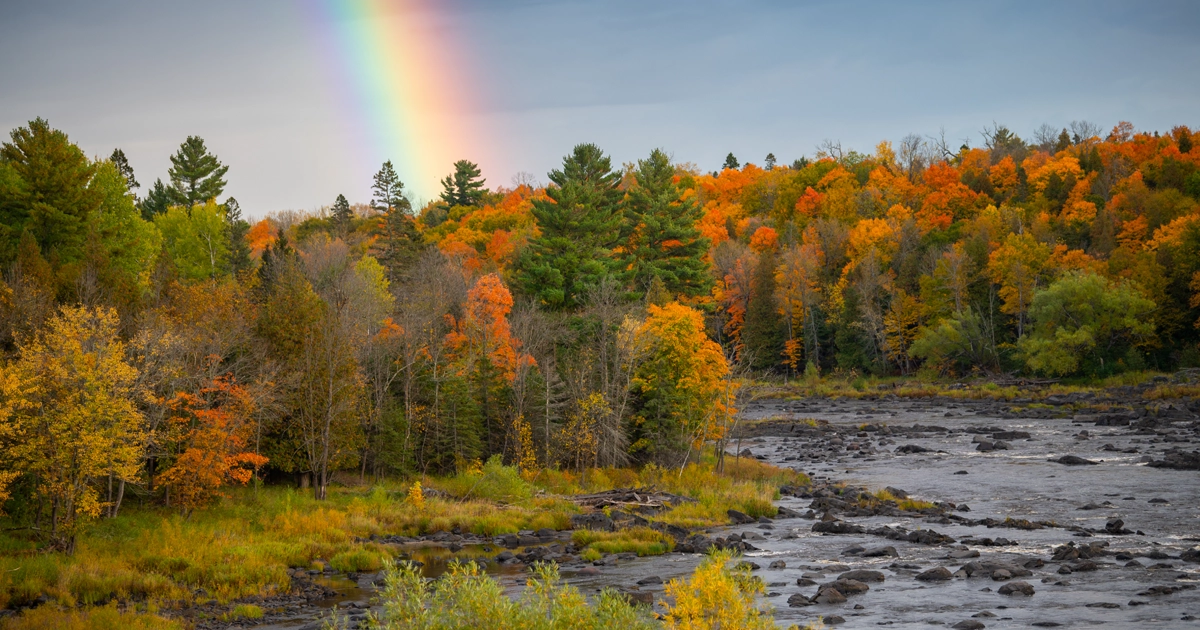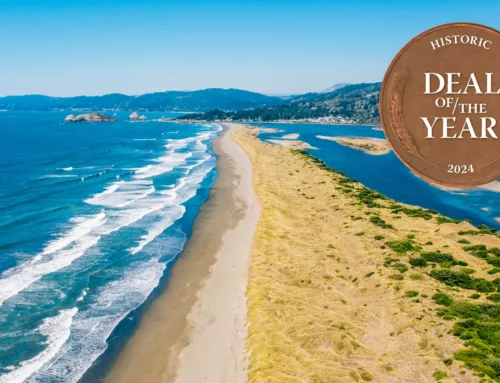The Conservation Fund Hits Million-Acre Mark
The Conservation Fund Hits Million-Acre Mark
By Bill Briggs

LR_MinnesotaTimberland-01
MINNESOTA TIMBERLAND. The Conservation Fund acquired 72,000 acres from PotlatchDeltic, 28,000 of which were then purchased by the Bois Forte Band of Chippewa.
The Conservation Fund notched a key goal in its mission to safeguard at-risk forests when it announced in late June that it has protected more than 1 million acres of working forestland from coast to coast. Those same acres were otherwise destined to be sold at auction or carved up for commercial development, according to The Conservation Fund CEO Larry Selzer. Instead, they will continue sustaining local logging jobs and mills, pumping much-needed dollars into rural America while providing critical wildlife habitat, recreational opportunities, plus cleaner air and water.
“One million is an enormously important milestone — equating to a billion dollars of capital deployed,” Selzer says. “We are responding to the greatest land-conservation challenge in the country today — the loss of large, intact, working forests. But we have a lot more work to do.”
And that work is now focused on hitting an even greater target: protecting 5 million acres of working forestland. “That’s what we’re aiming for,” Selzer says.
The Conservation Fund seeks to accomplish that massive task by 2035 to meet the “acute and urgent” consumption of working forests by builders and development interests, which are buying and cutting about “a million acres of forest every year” across the country, Selzer says. Based in Arlington, Virginia, The Conservation Fund may well have the system in place to complete that feat. Their confidence is rooted in those now-secured million acres, providing Selzer and team “proof this has the capacity to scale; to operate at speed and with sophistication.”
“We know,” he adds, “we can compete in the market.”
A Brand-New Approach to Buying Land
This rationale is based on a brand-new approach to buying land: Build an operating company to aggregate large amounts of capital, then deploy it quickly into working forestland. This would keep the acreage in private ownership and maintain forestry jobs and tax revenues. The end game always revolved around developing an exit strategy that kept these working lands permanently conserved.
“We created something that simply didn’t exist before,” Selzer says. “We are a nonprofit by tax status, but we believe that we are in the business of conservation — and we run it like a business.”
Early funding came mainly via philanthropic supporters. Topping the list was the Richard King Mellon Foundation in Pittsburgh, which works to protect and restore “America’s environmental heritage.” Selzer calls the foundation “our greatest partner in all this,” supplying a “significant pool of working capital.”
Simply put, The Conservation Fund and the Richard King Mellon Foundation share the same views on the widening loss of working forestland — as well as how to save what’s left. “The Conservation Fund has done an exceptional job given the urgency,” says Sam Reiman, director of the Richard King Mellon Foundation.
“They’ve done an exceptional job protecting property. And they’ve done it with all the competing forces that otherwise would result in us losing more of those precious landscapes,” Reiman says.
The Largest Transfer of Private Land in US History
Those competing forces erupted at the end of the 20th century as vertically integrated forest-product companies began divesting their holdings. Prior to 2000, pulp and paper companies used most of the nation’s industrial forestland to supply fiber to their mills.
But an economic overhaul ultimately triggered the sale of 90 million acres of forestland — the largest transfer of private land in US history. Most of that land was purchased by investment-management companies. Instead of being grown for pulp and paper for consumer use, timber was transformed into an asset class, feeding pensions and university endowments.
“When that tidal wave of land hit the market, it wasn’t all at once,” Selzer says. “Over the next 10 or 12 years, the environmental community was totally unprepared for that scale of opportunity. As a result, almost none of that land was conserved as working forests. In fact, of the 90 million acres sold, 20 million acres were lost right off the top to development, converted to shopping centers and housing developments instead of forest.”
As an antidote to this trend, the Richard King Mellon Foundation helped Selzer’s team pioneer the Working Forest Fund — a model to ensure at-risk forests are not parceled off and sold to developers. The fund mixed philanthropic capital and impact investments, all of which underpin the effort to save those 1 million acres, sustain more than 7,000 jobs, and secure 150,000-plus acres of wetland and 2,400 miles of streams.
The foundation awarded grants that flowed to the Working Forest Fund, helping Selzer’s nonprofit purchase its first tracts of forestland, Reiman says. Keep in mind however, that The Conservation Fund’s goal was always to exit those forestland holdings while leaving them in safe hands.
“The way we did it was by first selling conservation easements, which pre-vented fragmentation and prevented development but allowed for sustainable forestry,” Selzer says. “Then, we would sell that asset — the land with the timber — back into the private market.”
Sustainable Working Forests
Those permanent deed restrictions ensured the same timber properties could only be managed as a sustainable, working forest into the future. “That means people can access those properties in perpetuity to hunt, fish, bike … do whatever it is that they want to do,” Reiman adds. In 2019, The Conservation Fund turned to a time-tested source to scale its model: the financial markets. The nonprofit issued its first green bonds to protect forests, placing $150 million in unsecured, 10-year bonds, earning an investment-grade rating, and using Goldman Sachs as its underwriter. By late 2019, a substantial portion of those bonds had been invested.
“That was like rocket fuel for our acceleration,” Selzer says. “That’s what enabled us to get to the million-acre mark. We are like the investment bank for conservation.”
Today, they use their own balance sheet, capital markets, and the balance sheets of other business entities via strategic alliances and joint ventures to continue aggregating capital and accelerating the acquisition of more working forests. But the clock is ticking. And the acres are vanishing. Selzer foresees a 10- to 15-year window to nurture that same convergence of interests — a final stretch when enough impact investors stand ready to help secure the last working forests in perpetuity.
“That’s what drives us,” Selzer says.
“That’s what gets us up in the mornings — that urgency.”

ECONOMIC VITALITY. The Working Forest Fund has saved 7,000 jobs in rural America. Photo © Gustav Schmiege III.






